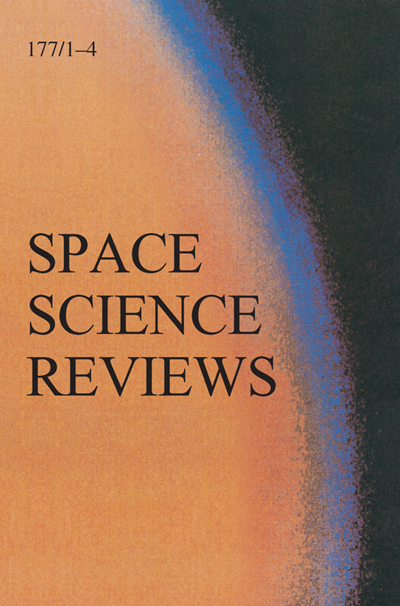HelioSwarm: A Multipoint, Multiscale Mission to Characterize Turbulence
IF 7.4
2区 物理与天体物理
Q1 ASTRONOMY & ASTROPHYSICS
引用次数: 3
Abstract
Abstract HelioSwarm (HS) is a NASA Medium-Class Explorer mission of the Heliophysics Division designed to explore the dynamic three-dimensional mechanisms controlling the physics of plasma turbulence, a ubiquitous process occurring in the heliosphere and in plasmas throughout the universe. This will be accomplished by making simultaneous measurements at nine spacecraft with separations spanning magnetohydrodynamic and sub-ion spatial scales in a variety of near-Earth plasmas. In this paper, we describe the scientific background for the HS investigation, the mission goals and objectives, the observatory reference trajectory and instrumentation implementation before the start of Phase B. Through multipoint, multiscale measurements, HS promises to reveal how energy is transferred across scales and boundaries in plasmas throughout the universe.太阳风:一个多点,多尺度的任务,以表征湍流
摘要:HelioSwarm (HS)是美国宇航局太阳物理部门的一项中型探测器任务,旨在探索控制等离子体湍流物理的动态三维机制,等离子体湍流是发生在太阳层和整个宇宙等离子体中的普遍过程。这将通过在9个航天器上同时进行测量来完成,这些航天器在各种近地等离子体中具有跨越磁流体动力学和亚离子空间尺度的分离。在本文中,我们描述了HS研究的科学背景、任务目标和目的、天文台参考轨迹和b阶段开始前的仪器实施。通过多点、多尺度测量,HS有望揭示整个宇宙中等离子体中能量如何跨尺度和边界转移。
本文章由计算机程序翻译,如有差异,请以英文原文为准。
求助全文
约1分钟内获得全文
求助全文
来源期刊

Space Science Reviews
地学天文-天文与天体物理
CiteScore
19.70
自引率
3.90%
发文量
60
审稿时长
4-8 weeks
期刊介绍:
Space Science Reviews (SSRv) stands as an international journal dedicated to scientific space research, offering a contemporary synthesis across various branches of space exploration. Emphasizing scientific outcomes and instruments, SSRv spans astrophysics, physics of planetary systems, solar physics, and the physics of magnetospheres & interplanetary matter.
Beyond Topical Collections and invited Review Articles, Space Science Reviews welcomes unsolicited Review Articles and Special Communications. The latter encompass papers related to a prior topical volume/collection, report-type papers, or timely contributions addressing a robust combination of space science and technology. These papers succinctly summarize both the science and technology aspects of instruments or missions in a single publication.
 求助内容:
求助内容: 应助结果提醒方式:
应助结果提醒方式:


